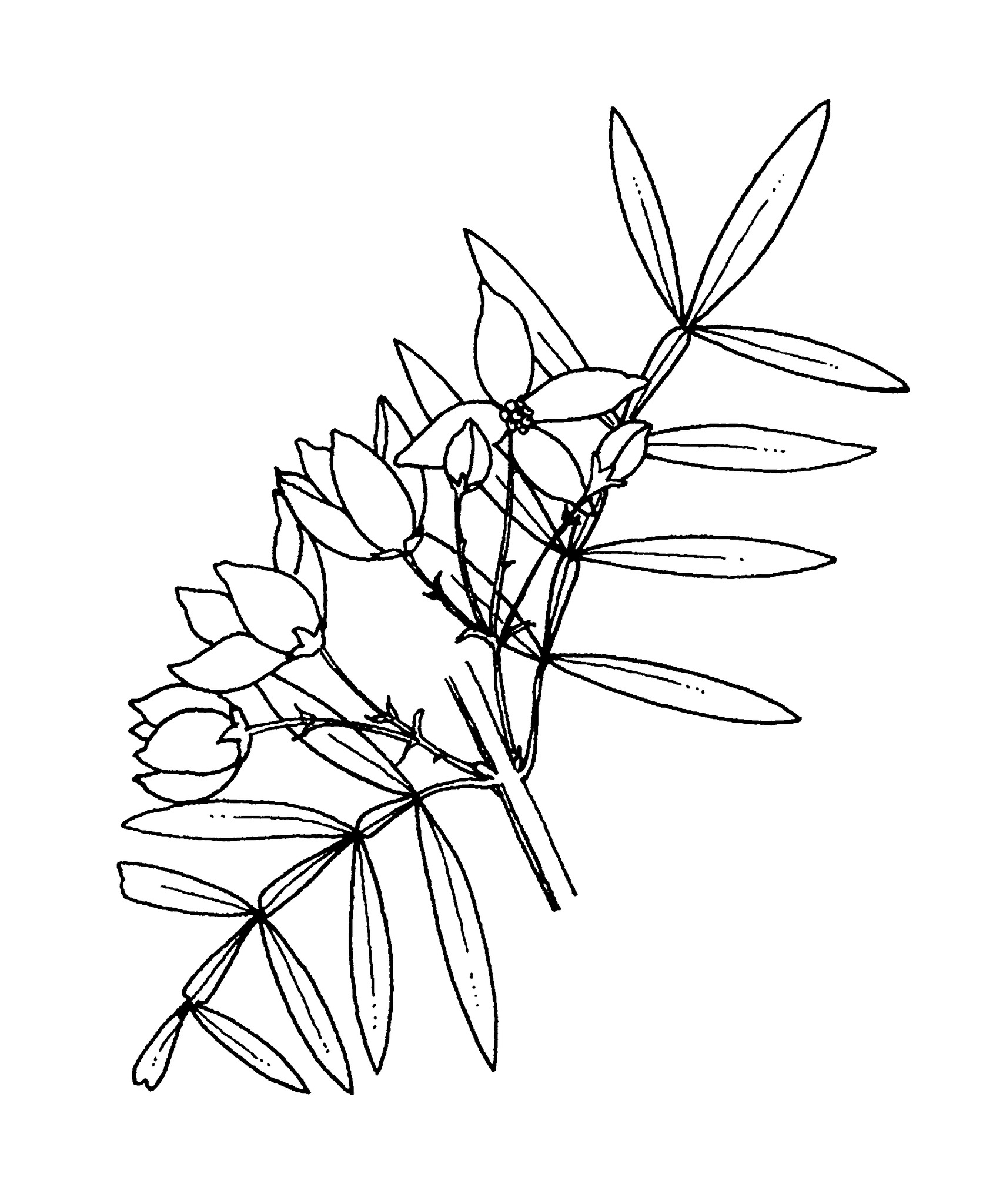
Commemorating Francesco Borone, 18th century Italian botanist.
Shrubs, or rarely small trees or herbs. Leaves opposite, rarely near-opposite or whorled, simple, with 1 leaflet, 3-19 or more leaflets or bipinnate, the leaflets entire or toothed, occasionally 3-lobed, the lateral leaflets opposite. Flower clusters axillary or terminal, sometimes solitary. Flowers bisexual, of 4 free sepals. Petals 4, free, sometimes persistent in fruit. Stamens 8, free. Ovary of 4 more or less free carpels, each with 2 ovules; styles united. Fruit of 1-4 units, the black seeds dispersed explosively.
Boronias are grown for their attractive, sometimes aromatic foliage and simple flowers; some have exquisite scents that are used in perfumery.They are becoming of increasing international importance as cut flowers.
The following are the more rarely cultivated species:
B. anemonifolia A. Cunn., Sticky Boronia, from E Australia which has 3 leaflets per leaf and axillary flowers in spring that are white or pink;
B. denticulata Sm. from WA which has simple flat leaves, the margins of which have small teeth and terminal, branching mauve to pink or white flower clusters in spring;
B. mollis Lindl., Soft Boronia, from NSW and available as 'Lorne Pride', a dense, compact, prolifically flowering form found originally at Lorne near Laurieton, NSW, and registered with ACRA in 1978;
B. molloyae Drumm., Tall Boronia, from WA, a shrub to 4 m tall with pinnate leaves and pendent, nearly closed flowers in spring and summer;
B. pilosa Labill., Hairy Boronia, from SA, Vic and Tas, available as the cultivar 'Rose Blossom', which is a smallish, compact shrub with double rose-like flowers; and
B. serrulata Sm., Native Rose (Sydney Rock Rose), a densely flowered species available in white as well as pink forms;
B. spathulata Lindl. from WA is available in a large-flowered form.
Most species by semi-hardwood cuttings, those from WA by seed.
Perfumery and as cut flowers in floristry.
Mostly shrubs; leaves opposite and decussate; petals 4, free; stamens 8; style terminal; fruit dry and dehiscent.
In 1997, 'Karwarra' in the Victorian Dandenongs had a collection of 76 different kinds, including over 20 cultivars.
148 species endemic to Australia.
Duretto (1999).
As the range of available boronias varies considerably from year to year, a key would be impractical.
Source: (2002). Rutaceae. In: . Horticultural Flora of South-eastern Australia. Volume 4. Flowering plants. Dicotyledons. Part 3. The identification of garden and cultivated plants. University of New South Wales Press.

A number of cultivars have been released by Yellow Rock Native Nursery, Winmalee, NSW, and Plant Growers Australia.
Flowers prolific in the leaf axils in late winter to early spring.
A natural hybrid, B. serrulata x B. floribunda, from the Hawkesbury sandstone region N of Sydney and given to Ken Turnidge of Turnidge's Nursery, Galston, NSW, in 1982.
Introduced c. 1989.
Upright shrub to 2 m tall with fragrant flowers in mid-spring, the petals long-lasting, turning deep pink.
B. heterophylla x B. molloyae.
Introduced 1987.
B. crassipes x B. heterophylla,
Collected by Yellow Rock Native Nursery, Winmalee, NSW, and introduced 1987.
Released by Telopea Valley Nursery and registered by ACRA in 1980.